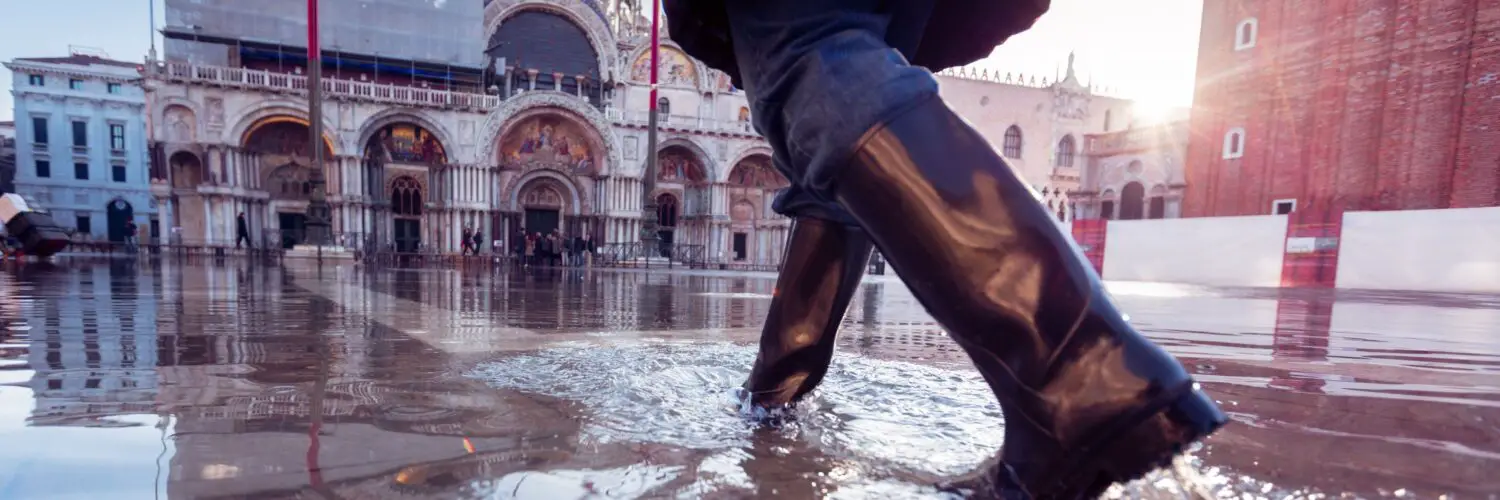The historic city of Venice, nestled in the northeastern region of Italy, is renowned for its architectural beauty and its unique foundation built upon water. With its enchanting canals, picturesque bridges, and historic squares, Venice captivates millions of visitors every year. However, this captivating city also faces significant challenges, including the impact of rising sea levels and erosion on its iconic buildings and structures. The question of whether Venice is sinking has become a topic of concern, especially in the face of global warming and the potential loss of this symbol of beauty and cultural heritage. The Venice Project Center has been actively studying the effects of sea level rise, monitoring the average sea level in Venice, and working towards solutions to mitigate the risks posed by major flooding events. The Grand Canal, along with the underwater channels, adds to the allure and uniqueness of Venice, but also highlights the vulnerability of the city. As we delve into this discussion, let’s explore the intricacies of Venice’s relationship with the sea and the ongoing efforts to preserve its charm and history. Join us for an insightful read and immerse yourself in the captivating allure of Venice, a city that continues to fascinate and inspire.
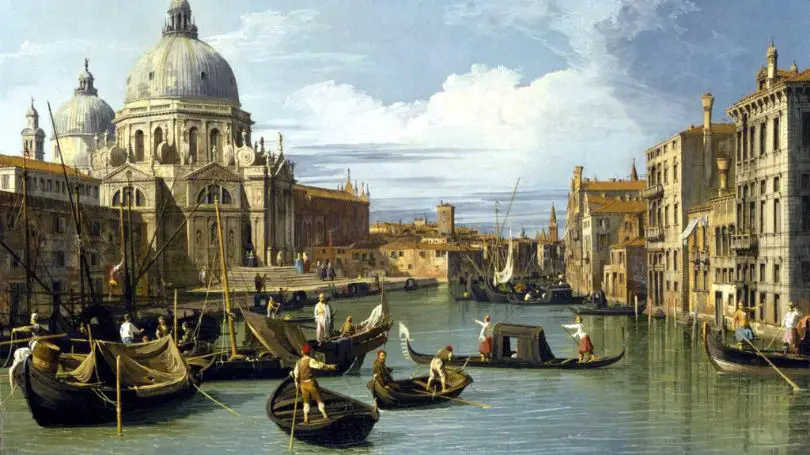
Origin of Venice
The historic city of Venice, known for its rich and captivating history, traces its roots back to ancient times. Its origins can be traced back to the 5th century, when the Veneto region’s Italian people sought refuge in the islands of the Venetian lagoon to escape barbarian invasions that ravaged the Italian peninsula. These communities, primarily of Roman and Celtic descent, discovered the islands to be a secure and sheltered environment for establishing their settlements.
The Early Days of Venice
Although the true development and construction of Venice began in the 9th century, when the scattered island communities in the lagoon started to unite under a central authority, the city’s colonization began earlier. The islands’ strategic location, nestled between the Adriatic Sea and the Mediterranean Sea, provided refugees with advantageous opportunities for thriving trade and vital shipping routes. As time passed, the city expanded and grew into a prominent commercial hub, fostering trade connections with the Middle East, Northern Africa, and the rest of Europe. This oriental influence left a lasting impact on Venice’s architecture, culture, and art, propelling it to become one of Europe’s most significant cities during the Middle Ages and the Renaissance.
Challenges and Preservation Efforts
Today, Venice faces challenges due to its unique geographical setting and environmental factors. The city’s average sea level, combined with the effects of global warming, has led to concerns about sea level rise and major flooding events. Various initiatives, such as the Venice Project Center, have been implemented to address these issues and find sustainable solutions. The iconic Grand Canal and the intricate network of underwater channels add to the charm and allure of the city, even as the threat of sinking remains a pressing concern. Despite these challenges, Venice continues to captivate visitors from around the world with its unparalleled beauty and captivating history.
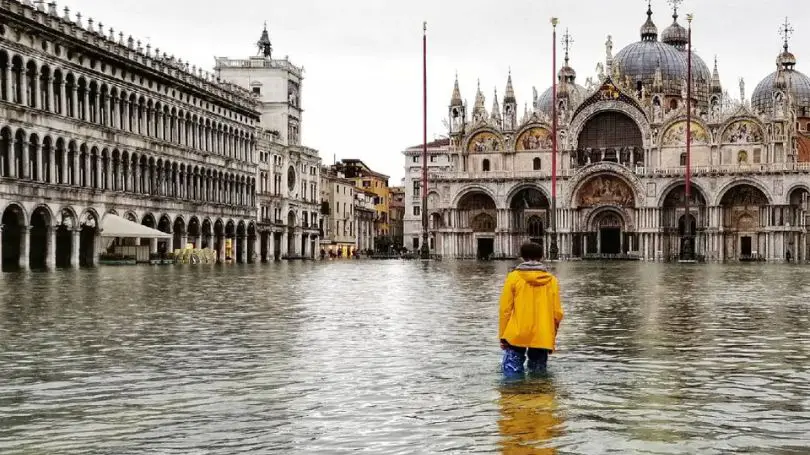
Is Venice sinking: flood history
Due to its unique topography and location on the lagoon, Venice has a long history of flooding dating back to Roman times. The city is particularly vulnerable to high tides, known as “acqua alta”, which lead to periodic flooding. These floods are a result of a combination of factors, including how Venice was built, high tide, wind action, and ongoing land subsidence.
Over the centuries, Venice has experienced numerous devastating floods that have had a significant impact on its architecture and infrastructure. The city’s average sea level, coastal flooding, and the slow sinking of Venice are ongoing concerns. To protect Venice from the risk of flooding, the city has implemented sea-based defensive barriers and continues to work towards its vision of safeguarding the city from the effects of rising sea levels and global warming.
One of the iconic areas affected by flooding is St. Mark’s Square, which is particularly prone to inundation during high tides. Efforts to mitigate the impact of flooding and ensure the long-term survival of Venice are crucial for preserving its rich history, art, and culture.
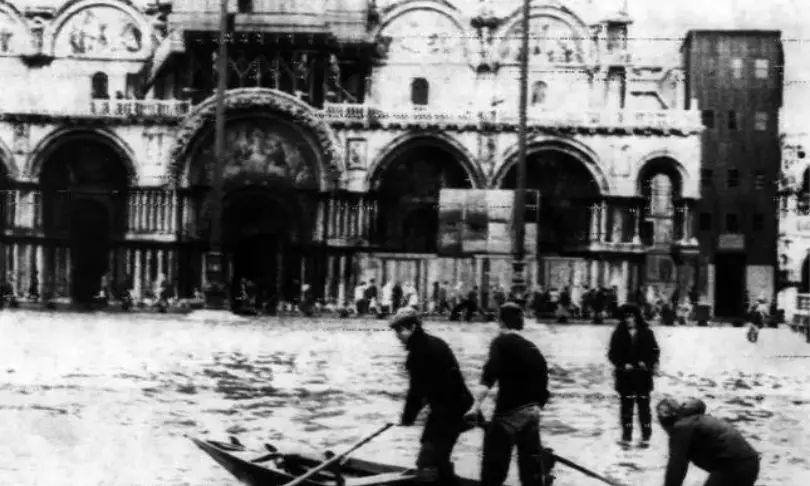
The devastating flood of 1966
The flood that occurred in Venice in 1966 is considered one of the most catastrophic natural disasters in the city’s history. This event, caused by a combination of factors including high tides and heavy rainfall, resulted in severe flooding that affected approximately 80% of Venice. The floodwaters, reaching a peak of 6.36 feet, invaded important landmarks such as St. Mark’s Square, causing significant damage to cultural heritage sites and resulting in the loss or damage of numerous works of art and rare books.
The devastating flood highlighted the ongoing concern of Venice sinking, as the city is slowly sinking due to rising sea levels. The average sea level in Venice has been a topic of concern, with the city experiencing frequent high tides known as “acqua alta.” This, combined with the impact of global warming and the future risk of coastal flooding, has prompted the implementation of measures to protect Venice from further damage.
Efforts to safeguard the city from sinking include the construction of sea-based defensive barriers and the development of strategies to manage flood risk. These initiatives align with Venice’s vision to preserve its unique heritage and ensure its long-term sustainability in the face of environmental challenges.
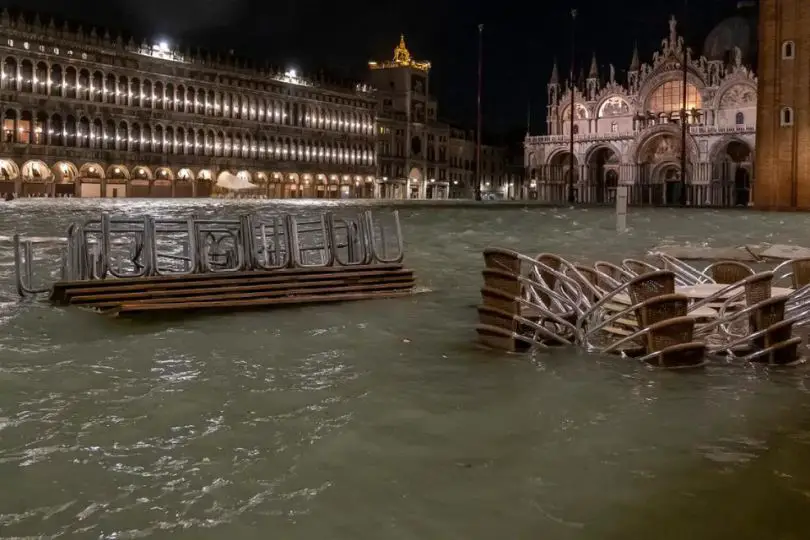
The flood of 2002
Despite all the efforts that have been taken since the fateful flood of 1966, in 2002 Venice experienced another of the worst floods in decades. On October 31 of that year, the high tide reached a level of 5.18 feet, which resulted in approximately 75% of the city being flooded. The water invaded churches, museums, shops, and homes, causing considerable damage.
Again, due to how Venice was built and again a mix of climatic factors, historic buildings suffered significant damage, including frescoes and valuable works of art, resulting in billions of euros in damage. Residents faced the destruction of their property and had to deal with the challenging task of clearing and rebuilding.
Sea Level Rising
This flood brought to light the urgent need for effective efforts to protect the city against future floods. Since then, many efforts have been made, some quite significant, such as the construction of the MOSE mobile barriers (Modulo Sperimentale Elettromeccanico), which are being developed to protect the city against high tides.
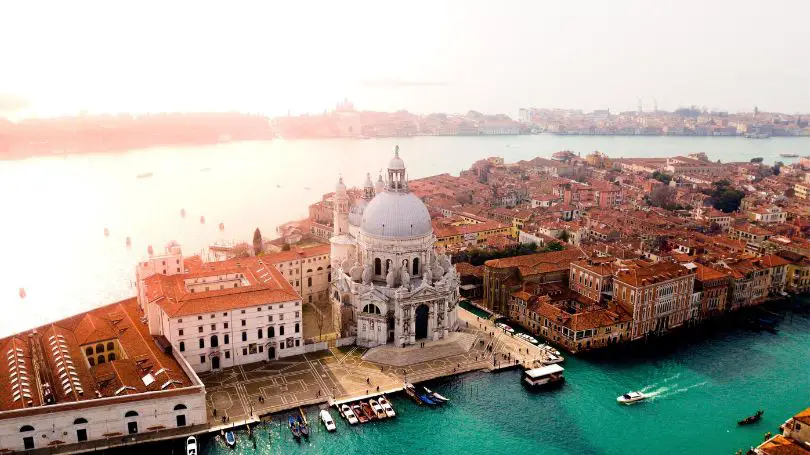
Can we say that Venice is really sinking?
Yes, it is true that the city of Venice is sinking! This natural process, known as subsidence, is occurring gradually at a rate of approximately 2 millimeters per year. It is caused by a combination of natural factors and human activities, as well as the unique way in which Venice was constructed. The city is built on a series of islands and islets in the Venetian lagoon, with the soil being composed of unstable sediments.
The sinking of Venice has been occurring for centuries, but human activities have exacerbated the problem. Excessive extraction of groundwater, pumping of water to supply the city, and the construction of heavy infrastructure have all contributed to the sinking. The additional weight of these structures and the extraction of underground resources have further contributed to the gradual sinking of the city. Furthermore, the effects of climate change and rising sea levels pose additional threats to Venice. As sea levels continue to rise, the pressure on the city’s structures increases, making it more vulnerable to flooding.
To address these challenges, protective changes are being implemented to safeguard the city’s vision. Measures are being taken to mitigate the effects of sinking and high water levels. Additionally, the impacts of global warming and Venice’s average sea level rise are being closely monitored. It is crucial to take prompt action to protect this unique and historically significant city from the ongoing sinking and potential future threats.
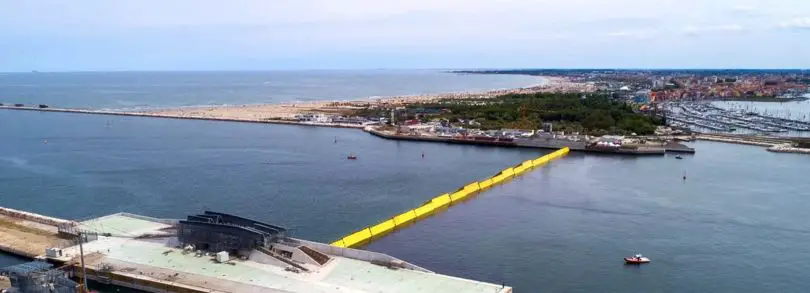
Strategies To Combat Sea Level Rise
To prevent the continuous sinking of Venice, several measures are being implemented to address this issue. The city’s vision is to safeguard its future by taking proactive steps to counteract the effects of subsidence and rising sea levels.
Monitoring and extensive research are being conducted to gain a better understanding of subsidence and ground changes. Expert researchers and engineers are actively studying the situation and devising innovative solutions to mitigate this problem effectively.
To preserve the hydrogeological balance of the region, restrictions have been imposed on groundwater extraction. This aims to reduce the excessive extraction that contributes to subsidence.
Historic buildings are undergoing structural interventions to reinforce their foundations and ensure their stability. Strengthening the foundations plays a crucial role in minimizing the impact of subsidence on these architectural treasures.
Efforts are also being made to control erosion and sedimentation on the islands and islets surrounding Venice. This involves maintaining navigation channels, restoring vegetation, and implementing measures to regulate vessels that could potentially cause adverse effects.
The implementation of the MOSE Project, which stands for Modulo Sperimentale Elettromeccanico, involves the installation of mobile barriers at the entrance to the Venice lagoon. These barriers act as a protective measure against exceptionally high tides, preventing water from entering the lagoon and safeguarding the city from potential damage.
Raising awareness and engaging the community are vital components of preserving Venice. Education campaigns are conducted to involve both locals and visitors in adopting sustainable practices and promoting environmental respect.
In conclusion, Venice’s sinking issue is being addressed through a comprehensive approach that includes research, restrictions, structural interventions, erosion control, the MOSE Project, and community involvement. The city is committed to protecting its heritage and ensuring a sustainable future amidst the challenges posed by rising sea levels and subsidence.
Final Thoughts
Efforts are being made to mitigate and reduce the intensity of the “Venice sinking” phenomenon. These measures aim to safeguard the city against the combined effects of rising sea levels and land subsidence. The preservation of this unique World Heritage Site necessitates a continuous, time-consuming, and intricate process due to the distinctive construction of Venice. Therefore, it is crucial to address the question, “Is Venice sinking?” The “Grand Canal” and other iconic landmarks of Venice are at stake due to the “Venice sink” issue. The city’s vision for the future relies on implementing protective changes to combat the challenges posed by the “rise” in sea levels and the ongoing “sinking” problem. The “high water” events and the “MOSE Project” play a significant role in the city’s resilience and response to these issues. Share your thoughts on this article about amazing Places and Destinations, and don’t forget to leave a comment below for more updates! Stay tuned!

